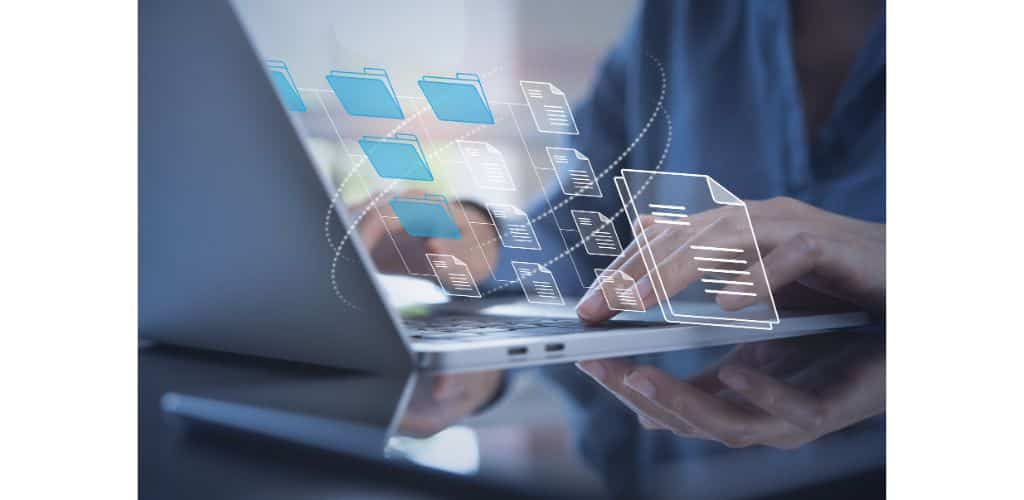A Federal Circuit judge, sitting by designation in the District of Delaware, granted-in-part and denied-in-part a Rule 12(c) motion by the defendant for judgment based on patent eligibility under 35 U.S.C. § 101.
The case is KOM Software Inc. v. NetApp, Inc.
KOM asserted patent infringement claims against NetApp. The claims are claims 5, 6, and 9 of U.S. Patent No. 6,654,864 (“the ‘864 patent”) and claims 4, 34, 69, and 103 of U.S. Patent No. 9,361,243 (“the ‘243 patent”). The patents are for restricting access to files contained within a computer data storage medium.
As the court explained,
…a software application may seek to access and modify various files stored in a storage medium, such as a hard drive or CD-ROM, while the medium is running…. In many operating systems, including “Windows NT,” the drivers for the storage devices are “hidden from applications by a protected subsystem.” … That is, the applications and the storage devices do not communicate directly with one another; instead, “[e]ach communicates with the operating system independently.”
In a typical operating system, a software application will submit a request to open a file through the application’s protected subsystem. The request is sent to the “IO [input/output] system services,” which in turn direct the “IO Manager” to communicate with the device drivers. … As the specification of the ‘864 patent notes, prior art systems would require the device drivers to “deal[] with file system commands which cannot be completed,” because all access requests were sent through the IO manager to the device drivers. …
The ‘864 and ‘243 patents disclose implementing a “trap layer” between the application layer and the file system layer of the computer system. … The trap layer prevents invalid requests from being passed to the device drivers. Based on the capabilities of the storage device that is being accessed, the trap layer can block some requests and modify other requests.
Section 101 of the Patent Act defines patent-eligible subject matter as follows:
Whoever invents or discovers any new and useful process, machine, manufacture or composition of matter, or any new and useful improvement thereof, may obtain a patent therefore, subject to the conditions and requirements of this title.
The US Supreme Court has interpreted that provision to carve out exceptions to patentable subject matter for “[l]aws of nature, natural phenomena, and abstract ideas.”
However, as the court noted, neither the Supreme Court nor the Federal Circuit has provided a single, comprehensive definition of an “abstract idea.”
Instead, several principles for applying section 101 have emerged from the case law.
Relevant to this case, courts have found:
- “Method[s] of organizing human activity” are abstract.
- Where the claims at issue provide for an improvement in the operation of a computer, such as a new memory system, a new type of virus scan, or a new type of interface that makes a computer function more accessible, the Federal Circuit has found the claims patent-eligible.
- The Federal Circuit has held that claims are directed to an abstract idea if they are “directed to collection of information, comprehending the meaning of that collected information, and indication of the results, all on a generic computer network operating in its normal, expected manner.”
- In determining whether a method claim is directed to an abstract idea, the Federal Circuit has focused on whether the claim is purely functional in nature or is sufficiently concrete or specific to be directed to a patent-eligible process rather than a patent-ineligible result.
- In determining whether a particular invention is directed to an abstract idea, it is therefore important to ask whether according patent protection to the claimed subject matter would have a broad preemptive effect on future innovation in the same field.
The court concluded that certain claims of the patents in this case were patent-eligible because they were directed to a problem arising in the realm of computers and identified a specific improvement.
However, other claims were found to be ineligible because they recite broadly generic steps and weren’t limited to the technical advances in the specification.
Takeaway: patent applications in the computer field should focus on solutions to problems and improvements in computer technology.
Just like the haiku above, we like to keep our posts short and sweet. Hopefully, you found this bite-sized information helpful. If you would like more information, please do not hesitate to contact us here.


